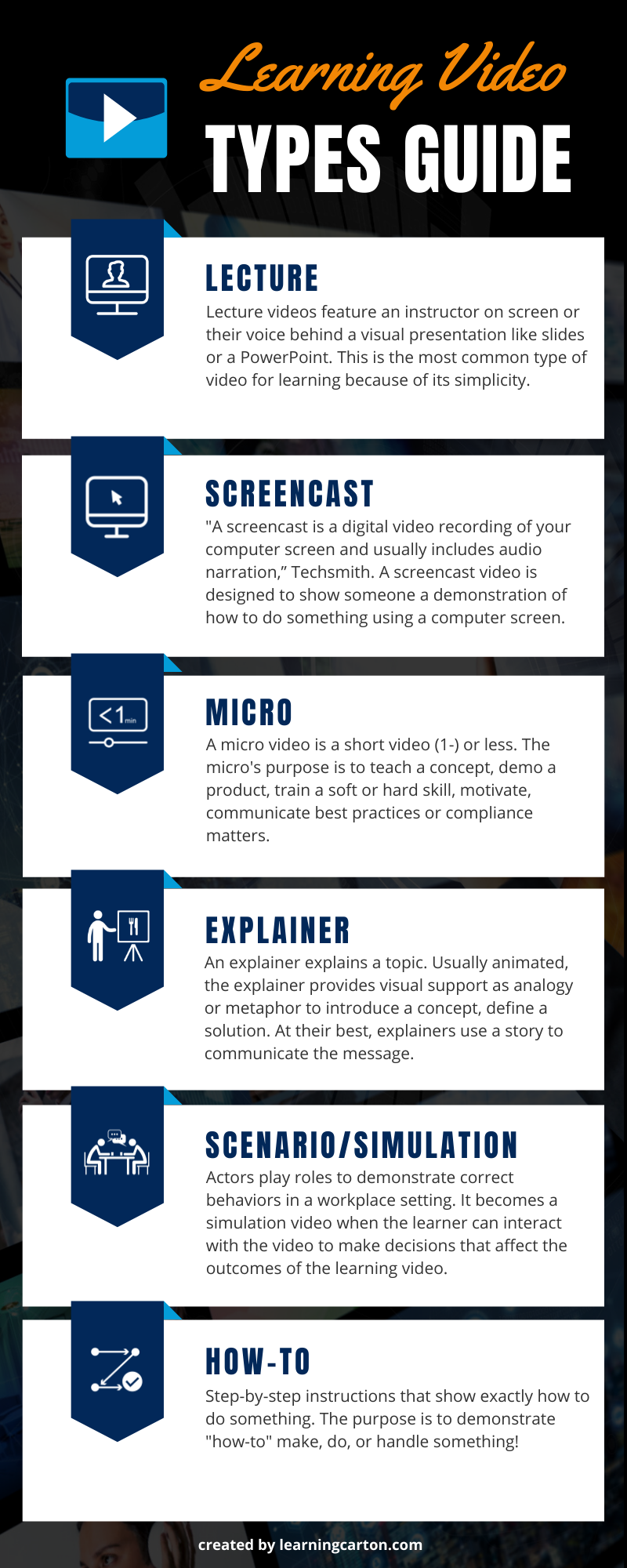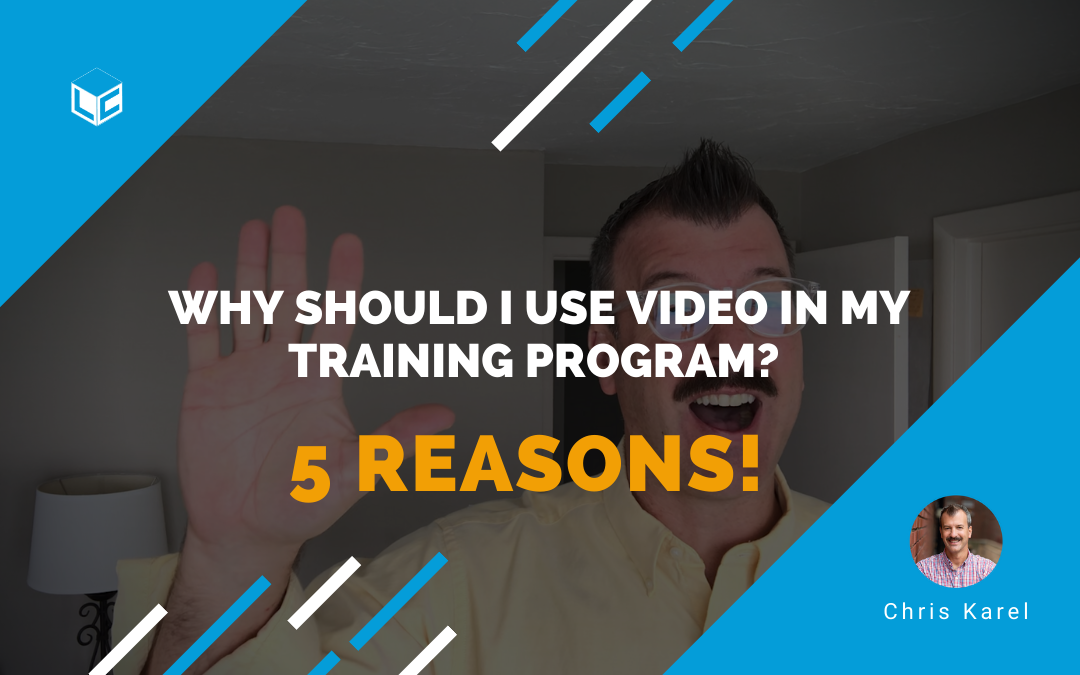Why should I use video in my training program? A partner of mine asked that question over Arizona BBQ. “Well,” I said smiling wide. ”
Video is such a powerful learning tool. It has become a language that younger generations master before they learn how to drive; think Tik Tok, Snapchat, YouTube. It also makes up over 80% of all video traffic.
Why should I use video in my training program? Introduction
Video is all around us. It’s in our homes, stores, airports, public spaces, and even in our pockets. It’s a medium that almost everyone consumes daily, whether passively or actively. According to Cisco, video will account for 82% of global internet traffic by the year 2022. Let that number sink in. As the medium of video thrives, educators, instructors, and trainers have been using more and more of it to provide relevant instruction to their learning audience. Let’s dive in and explore five reasons why you should use video in your training and learning programs.
Convenience
With the variety of video-playing devices available these days, the learner can watch and get enlightened whenever and wherever. From their desk, living room couch, the bus, waiting for a flight, laying by the pool…you get the idea. Convenience is also one of the Five Business Advantages of Online Learning.

Autonomy
Learners can stop, start, skip, and replay content depending on their individual needs, which empowers active learning.

Engaging
Most people watch video of some genre. Providing learning content in the form of video is giving them something with which they already feel comfortable consuming. When video is inserted into eLearning it keeps people engaged – and coming back for more. This increased engagement is also one of the Five Business Advantages of Online Learning.

Multi-sensory
When it comes down to it, an educational video is visual learning enhanced with auditory cues from voice, sound effects, and music. A video can even create behavior modeling urges in the viewer, which is important in stimulating kinesthetic (or tactile) learning.

Social
Starting at birth, humans learn by watching, observing, imitating, and modeling the behavior of others. Video turns abstract concepts into concrete knowledge and action by providing learners with context and perspective.

With Great Power, Comes Great Training/Learning Videos?
Jokes aside, the language of video requires that you understand the difference between video for entertainment and video for learning (training). Learning videos or “Educational” videos can be broken down into six categories: Lecture, Screencast, Micro, Explainer, Scenarios/Simulations, and How-to.

Click to learn more about The Six Types of Video for Learning.
Jumpstart your Video Language Skills
Video for Learning is its own genre. The purpose of a learning or training video is to improve the knowledge, skills, and behaviors of the audience. If this purpose is not clear, you are not making a learning video.
My point is this: the type of video you choose to make for instructional purposes should always tie back to the learning objectives derived from your needs analysis. And, of course, the learning objectives should support your business purpose. As a result, acknowledging training video as its own “thing” is important.
It sounds complex, but it doesn’t have to be.
Break it down, list it out, and then work the checklists to create meaningful, educational videos.
I teach a live course that holds you accountable, gives you deadlines, and offers you a proven process that you will customize and own in the end. Check out the Video For Learning Course Overview to learn more or contact me directly if you want to sign up for an upcoming cohort – chris@learningcarton.com
Summary
Now you know the answer to, “Why should I use video in my training program?” Video is a powerful medium that is quickly becoming the number one mode of communication. However, it’s important to recognize the difference between learning (training) video and entertainment. The key difference is that learning video delivers on the promise to improve the knowledge, skills, and behaviors of the audience. To acquire the language of video you need to learn the video production skills that will empower you to make learning videos. Take a course, forge a path, create a process, and start speaking the language of video!


